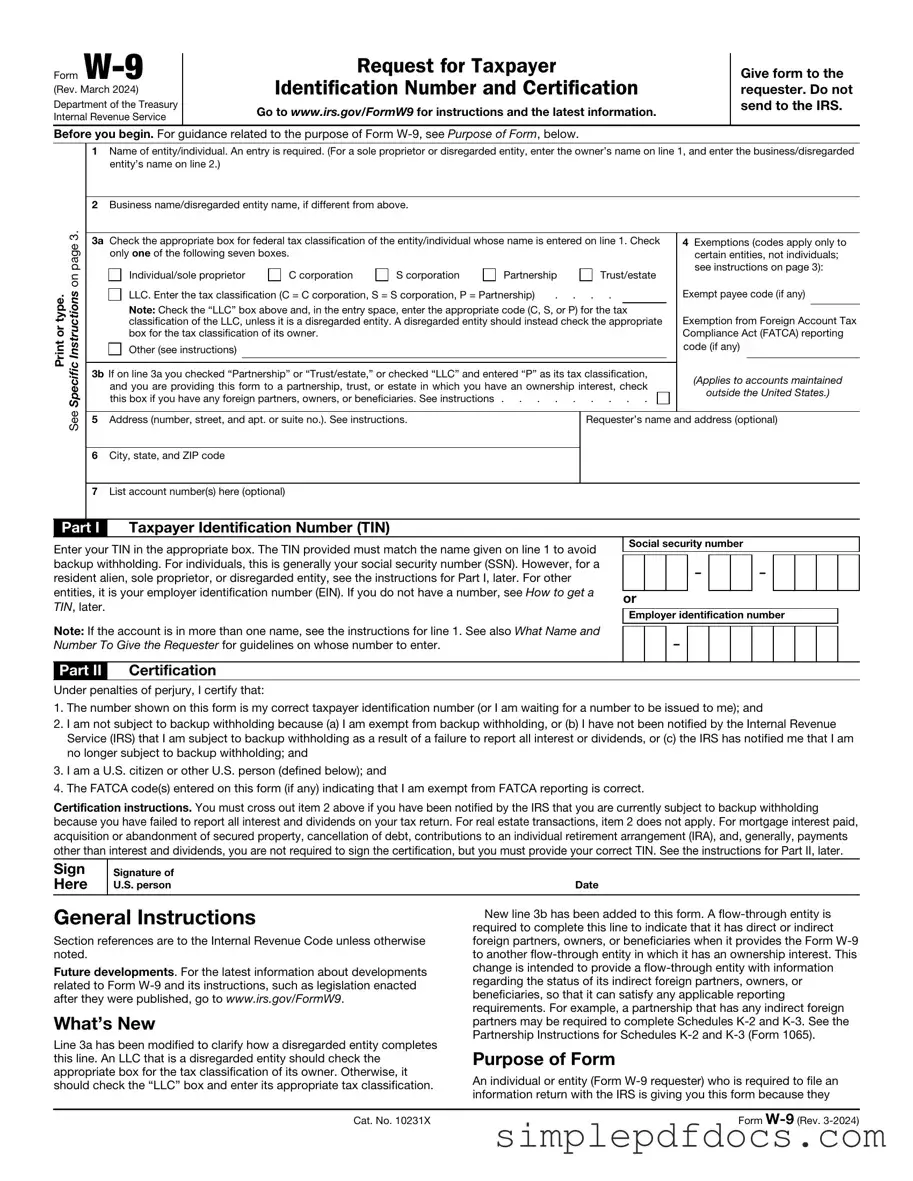The IRS W-9 form plays a crucial role in the financial landscape for both individuals and businesses. Designed to gather essential information, this form is primarily used to request the taxpayer identification number (TIN) and certification of U.S. persons. When a business or individual hires a contractor or freelancer, they often require the completion of a W-9 to ensure accurate tax reporting. The form includes sections for the name, business name (if applicable), address, and TIN, which can be a Social Security number or an Employer Identification Number. Additionally, it contains a certification section where the signer attests to the accuracy of the information provided. Understanding the purpose and proper completion of the W-9 form is vital for maintaining compliance with tax regulations, avoiding potential penalties, and ensuring that payments are reported correctly to the IRS. As such, both payers and payees benefit from familiarizing themselves with this important document.
